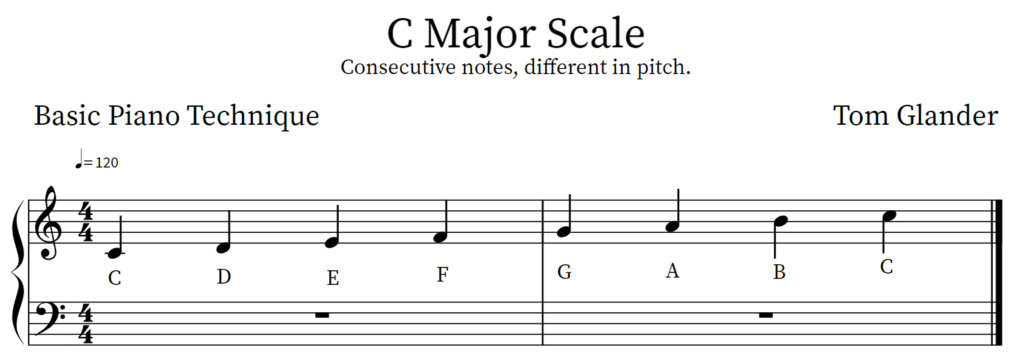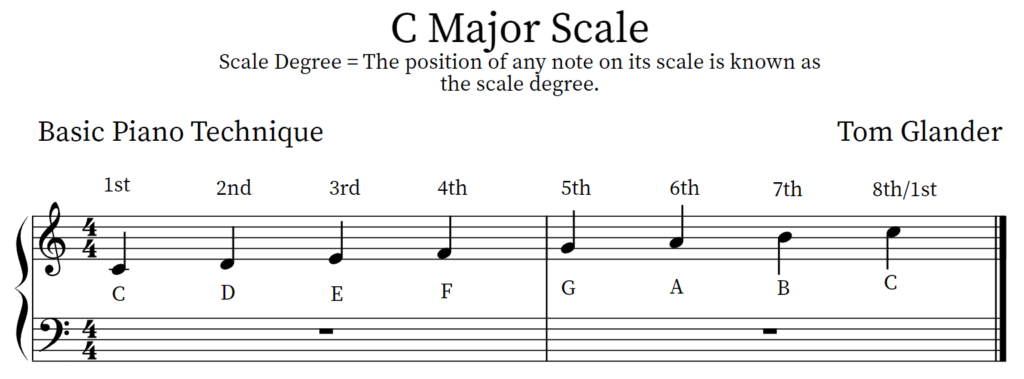
A scale is “any consecutive series of notes that form a progression between one note and its octave“, typically by order of pitch.
The C Major scale is the cornerstone of music. Once you understand how it was derived, how it works, and how simple it is, you’re set for life. You will literally be able to play whatever you want to play… with practice, of course.
The piano contains the notes A, B, C, D, E, F, G. That is all. From one of those seven notes, we will choose C. We will focus all of our energy on C, and nothing else.
Why did we pick C? Because there are no sharps or flats in the C Major scale.
Why is it called a “Major” scale? Because it’s not a minor scale. All the patterns in the scale leave us with white keys only. A minor scale (usually) includes black keys. There are exceptions, of course, but this is not advanced music theory.
Ok, here’s what the C Major scale looks like:

It starts on middle C, and ends on the next C above middle C.
There are 7 unique notes, C, D, E, F, G, A, B. The final C is an “octave” meaning it’s the 8th note. Any octave is an 8 note spread, from whatever note is in the root position, to that next same note higher or lower on the keyboard.
The “root” position is the starting note. It’s called the “root” because it is the note from which all the other notes in a scale or chord begin.
Next, we give each a note a “degree” name. So we can refer to the degree of the note or to the name of the note. As you progress in your understanding, you may find that you come across “degrees” at some point. Again, very easy to understand, since we just number the notes from 1 to 8, and those are the “degrees.”

For now, it is enough to know the C Major scale. You should be able to do the following:
- play the musical scale note by note
- call out the note name while you are playing it
- know where all the various notes are located on the keyboard
- know what the note names are for the lines and spaces in treble and bass clefs.
Now that you know the basics of piano, let’s get into actually playing the keyboard by reading some simple notes. We need to look at what to do with your hands, though, because they are an important part of the ingredients in our musical recipe.
